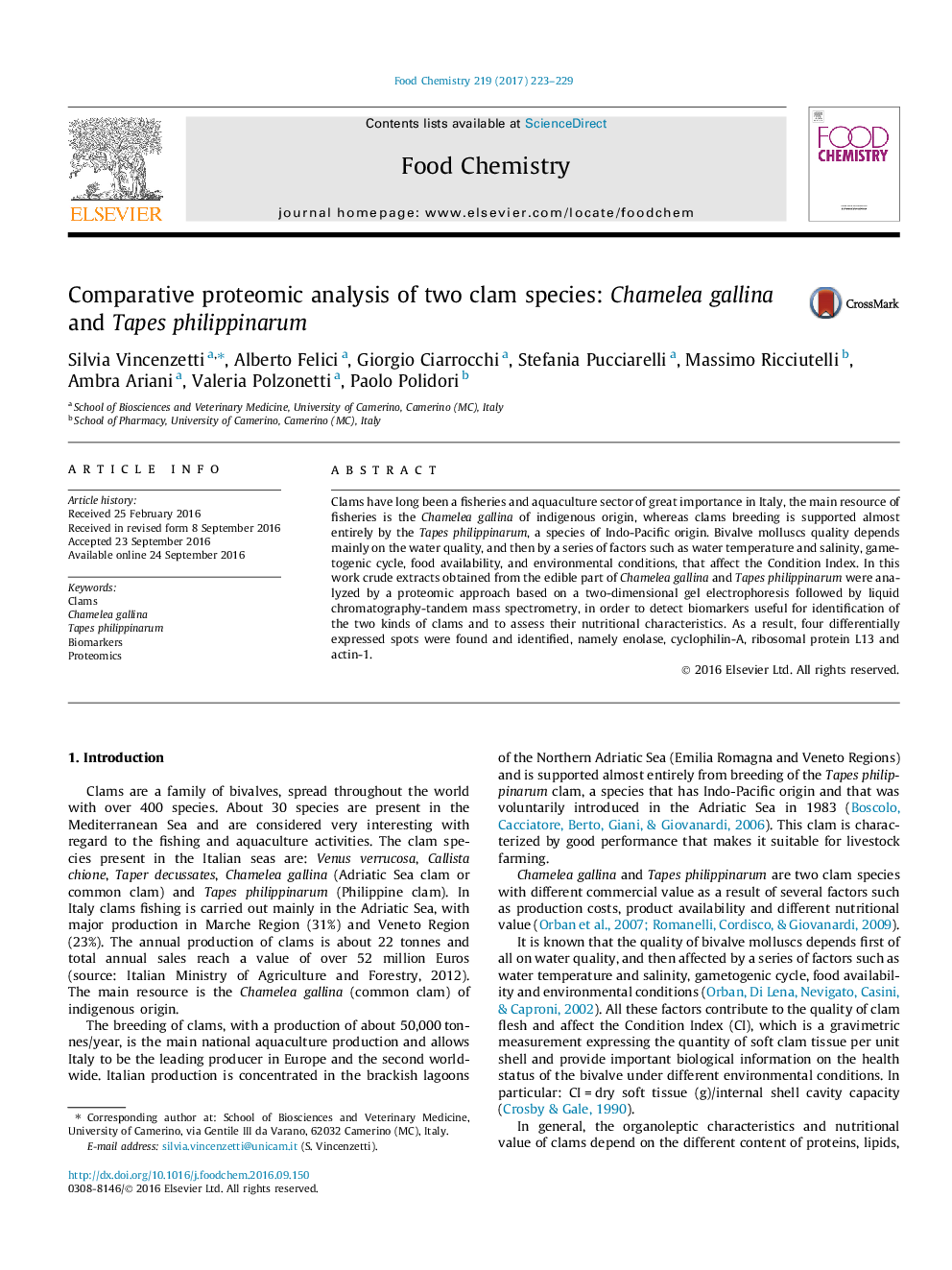| Article ID | Journal | Published Year | Pages | File Type |
|---|---|---|---|---|
| 5134143 | Food Chemistry | 2017 | 7 Pages |
â¢Proteomics allows the identification of biomarkers used as food quality parameters.â¢Specific biomarkers of Chamelea gallina and Tapes philippinarum were identified.â¢Enolase resulted mainly expressed in Chamelea gallina clam.â¢CypA, RPL13, and actin-1 were expressed only in Tapes philippinarum clam.
Clams have long been a fisheries and aquaculture sector of great importance in Italy, the main resource of fisheries is the Chamelea gallina of indigenous origin, whereas clams breeding is supported almost entirely by the Tapes philippinarum, a species of Indo-Pacific origin. Bivalve molluscs quality depends mainly on the water quality, and then by a series of factors such as water temperature and salinity, gametogenic cycle, food availability, and environmental conditions, that affect the Condition Index. In this work crude extracts obtained from the edible part of Chamelea gallina and Tapes philippinarum were analyzed by a proteomic approach based on a two-dimensional gel electrophoresis followed by liquid chromatography-tandem mass spectrometry, in order to detect biomarkers useful for identification of the two kinds of clams and to assess their nutritional characteristics. As a result, four differentially expressed spots were found and identified, namely enolase, cyclophilin-A, ribosomal protein L13 and actin-1.
